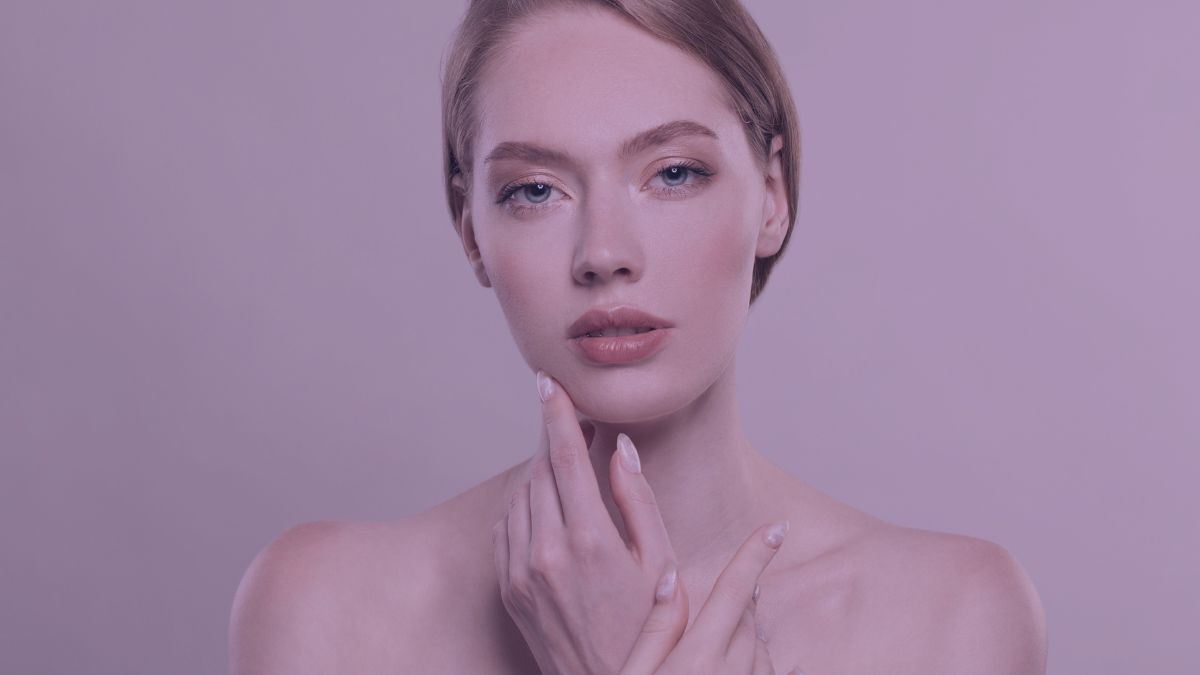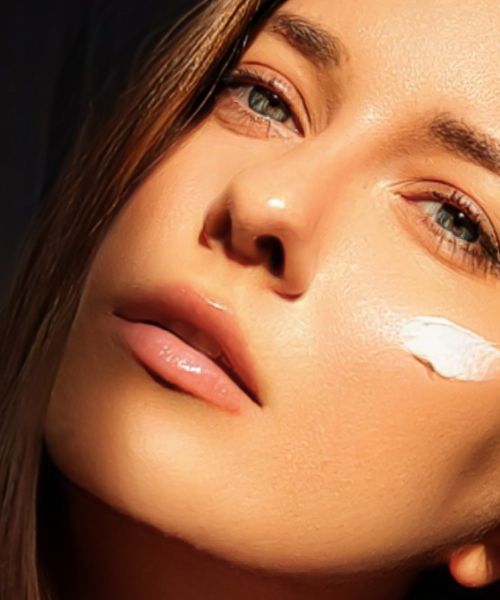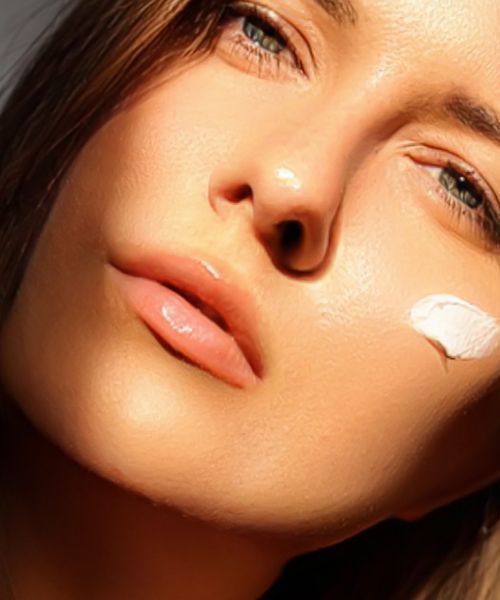Benzoyl peroxide is an active ingredient used to treat mild to moderate acne.
While benzoyl peroxide doesn’t cause initial purging the way exfoliating acids usually do, it can worsen breakouts if the product is too strong and irritates the skin, leading to a damaged skin barrier and a microbial imbalance.
Therefore, in this article, I will talk about what benzoyl peroxide is and how it works to minimize acne and also point out a few side effects you should watch out for, as well as how to use it correctly and get maximum results without overdrying and irritating your skin.

What is Benzoyl Peroxide?
Benzoyl peroxide is a topical acne medication available in over-the-counter products with varying strengths. It’s most commonly used to treat mild to moderate acne.
It works by releasing oxygen into the pores of your skin, which destroys the airless environment, or a clogged pore, the bacteria that cause acne need to survive and proliferate.
This, in turn, will reduce the bacterium’s activity which has triggered the immune system into a fight mode and has resulted in a swollen, red dot on the skin’s surface we see as a pimple, leading to reduced inflammation in the affected area, and subsequent reduction of the bacterial overgrowth.
Additionally, benzoyl peroxide is also a keratolytic agent, which means that it breaks down the outermost layer of the skin and reduces the buildup of dead skin cells on the skin’s surface.
This action will encourage new cells to travel to the skin’s surface more efficiently instead of remaining stuck inside the pores where they form a clog that serves as food for the acne-causing bacteria, leading to a possible further reduction in acne.
Finally, benzoyl peroxide has also been shown to have some anti-inflammatory properties due to its ability to reduce the production of inflammatory chemicals called cytokines, which are produced by the body’s immune system in response to infection, injury, and bacterial overgrowth.
By reducing the production of cytokines, benzoyl peroxide can help calm acne and minimize symptoms associated with this inflammatory condition, such as redness, swelling, and pus.
The Benefits of Using Benzoyl Peroxide

Benzoyl peroxide has multiple benefits for the skin, including reducing the severity of acne, soothing redness, and inflammation, minimizing the buildup of dead skin cells on the skin’s surface, clearing cellular debris out of pores, and balancing oil production.
All these actions will lead to a clearer, more refined, healthier complexion that is less prone to blemishes, breakouts, and other skin problems.
Does Benzoyl Peroxide Cause Purging?
While many people experience a purging-like effect when starting benzoyl peroxide, the component itself doesn’t cause purging.
Purging is a stage that occurs when you start using a new product containing components that speed up cellular turnover and cause the cells to renew faster, leading to a temporary increase in the appearance of existing skin issues as the cells rise to the surface.
This occurs because the existing clogs inside the pores that would’ve become pimples at different points in time are now appearing earlier and at the same time as they are carried up towards the skin surface through the increased cellular activity, and this makes them look more severe than usual.
However, the good news is that purging is temporary and, depending on the active ingredient, it lasts anywhere from four to twelve weeks for some people and up to six months for others, especially those trying tretinoin for the first time.
Along with tretinoin, some other active ingredients that can induce temporary purging include exfoliating acids and various vitamin A derivatives, such as retinol, adapalene, and tazarotene.
As you probably noticed, benzoyl peroxide isn’t an ingredient that induces purging, and even though this component has a mild keratolytic effect on the skin, it doesn’t work the way exfoliating acids and retinoids do.
While benzoyl peroxide will have a mild effect on unclogging pores by reducing cell buildup on the skin’s surface, this is not its primary mode of action, so it cannot be compared to components such as exfoliating acids and retinoids that are specifically designed to bind to specific receptors in the skin and speed up cellular turnover, which is the key factor in purging.
Additionally, exfoliating acids and retinoids are often used to address a broader range of skin concerns, including fine lines, wrinkles, hyperpigmentation, and dullness due to their ability to speed up cellular turnover, while benzoyl peroxide won’t offer the same anti-aging benefits because, again, it doesn’t directly promote cellular turnover.
However, as I already mentioned, some people might notice an increase in pimples when using benzoyl peroxide for the first time, and several other factors can cause this breakout effect.
Here are a few reasons why benzoyl peroxide might trigger a purge-like effect:
• You are misusing benzoyl peroxide and causing barrier disruption, triggering the breakouts.
• The benzoyl peroxide you are using is too strong for your skin and is causing a barrier disruption, making you break out rather than triggering a purge that will eventually go away.
• You are using other products that are clogging your pores and causing you to break out, and the benzoyl peroxide you are using is just exacerbating the issue by irritating your skin.
• The benzoyl peroxide you are using also contains clogging ingredients that clog your pores and prevent the active ingredient from doing its job properly.
• You have used benzoyl peroxide for a long time, and it has caused an imbalance in your skin’s microbiome, triggering an overgrowth of pathogenic bacteria that’s causing the breakouts.
The bottom line is if you are experiencing a purge-like effect from benzoyl peroxide, you should pause using the product and consider other factors that might be causing these issues rather than continue to rely on the benzoyl peroxide and potentially worsen the issue over time.
Side Effects of Using Benzoyl Peroxide
While benzoyl peroxide can effectively treat both inflammatory acne, it definitely comes with its fair share of potential side effects.
Some common side effects of using benzoyl peroxide include skin dryness, sensitivity, irritation, itching, and exacerbated breakouts due to overusing benzoyl peroxide or using it for a prolonged period and causing an imbalance in your skin’s microbiome.
This essentially means that the beneficial bacteria on your skin is being killed off and replaced with harmful bacteria, leading to increased acne and other skin issues.
How to Use Benzoyl Peroxide Without Experiencing Side Effects?

Whether it’s consistent and stubborn breakouts, dryness, irritation, peeling, flakiness, or redness, the key to achieving clear skin while using benzoyl peroxide is finding the right balance between preventing breakouts and avoiding excessive irritation.
Here’s how to do this:
Choose the Right Strength
The best way to do this is to assess the severity of your unique concern and the current state of your skin, as this will help you decide on the right concentration.
In general, those with mild to moderate acne and sensitive skin should always opt for a low benzoyl peroxide concentration of 2.5% while those with oilier and more resistant skin dealing with moderate to severe acne can use concentrations up to 5%.
On the other hand, if you are dealing with body acne, such as blemishes on the back, bum, and chest, you will need a higher concentration of up to 10% benzoyl peroxide to penetrate through the thicker skin on the body and target the acne-causing bacteria deeper in your pores.
However, while this is a broad generalization, it isn’t always the case, and benzoyl peroxide can sometimes cause irritation even in those with more resistant skin, so you should always watch out for signs of irritation and adjust the concentration accordingly.
Start Gradually
After you’ve chosen the right strength, start gradually by using your benzoyl peroxide product once or twice a week if it’s in a leave-on form or up to three times a week if it’s in a cleanser form, as this will help you avoid irritating your skin and prevent an overgrowth of harmful bacteria.
Don’t Overuse Benzoyl Peroxide
Unlike when starting a retinoid, where the goal is to get your skin used to the active ingredient by increasing usage every few weeks until you can tolerate it daily, the same rule doesn’t apply to benzoyl peroxide.
Your skin doesn’t need to build a tolerance to benzoyl peroxide, as once it does, it is usually a sign you should give this product a break to avoid microbial imbalance and potential overgrowth of harmful bacteria.
Instead, continue using benzoyl peroxide as needed or up to twice a week, and if you can see improvement in your skin without symptoms of dryness and irritation, stick with the frequency you have been applying as improvements are a clear sign that what you’re doing works and your skin is getting the optimal result of this active ingredient without the side effects.
Take a Break
As previously mentioned, benzoyl peroxide can cause microbial imbalance and an overgrowth of harmful bacteria on your skin due to its antimicrobial properties.
This happens because antimicrobial components cannot differentiate between the good and bad bacteria on the skin, and they destroy everything in their path.
However, as good as this sounds to those who don’t understand how the skin works, let me remind you that there are strains of bacteria on your skin that are actually beneficial, as they help keep the balance of your microbiome and prevent an overgrowth of the type that could lead to inflammation and breakouts.
This is why destroying everything is a bad idea and can tip the balance of your microbiome, leading to an overgrowth of harmful bacteria that can worsen your skin’s condition and exacerbate breakouts.
Therefore, it is important to give your skin a break after using benzoyl peroxide products for a prolonged period and let your skin reset its microbiome in peace.
Depending on your unique concern and the state of your skin, you can take a break for anywhere from one to four weeks, and if you don’t feel like the break was enough, continue taking more time off until you feel your skin is better.
I understand that many people will be scared to stop using benzoyl peroxide, especially if it helped clear their skin out of fear that the breakouts will come back; however, remember that benzoyl peroxide is a bandaid and not a solution for acne.
If your acne persists after stopping benzoyl peroxide, it might be a good time to consider making changes to your skincare and makeup routine, diet, and lifestyle habits that might be contributing to the breakouts and make sure to address these underlying causes to achieve a clear complexion without always relying on a temporary solution that could cause skin issues down the line, such as benzoyl peroxide.
Follow Up With a Complete Skincare Routine
As benzoyl peroxide can be drying and irritating to the skin, using it in conjunction with a complete skincare routine that consists of a gentle cleanser, a hydrating toner or serum, a nourishing moisturizer, and a sunscreen with SPF of 30 and higher is essential.
All these products will not only mitigate the potential damage benzoyl peroxide can do to the skin by drying it out and irritating it but can also replenish the skin barrier, strengthening its ability to fight off the overgrowth of pathogens and environmental pollutants, which will help get you a step closer to a clear complexion in the long run.

My name is Simone and I am a certified skin specialist. I created this website to teach my readers how to take great care of their skin and I also like to occasionally share my honest opinions on skincare products I’ve tried. You can learn more about me here.
